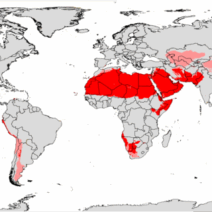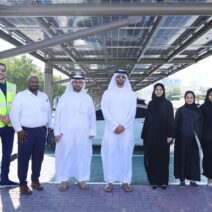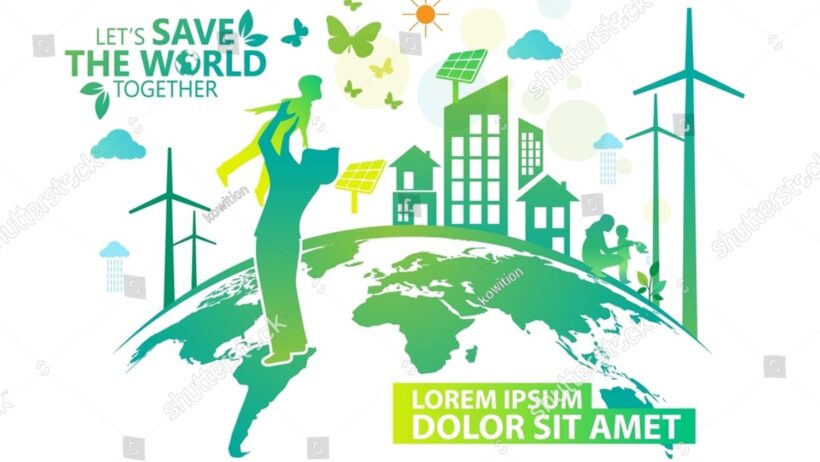In an era where climate change looms large over the planet’s future, the concept of eco cities emerges as a beacon of hope. These innovative urban designs not only aim to create sustainable living environments but also tackle the pressing challenges of energy conservation and ecological balance. The fascinating allure of eco cities lies in their multifaceted approaches to energy efficiency, demonstrating that urban areas can indeed lead by example in the fight against climate change.
Eco cities are often characterized by their commitment to reducing energy consumption through a combination of technological innovation, infrastructure design, and community involvement. One of the cornerstone strategies employed by these cities is the integration of renewable energy sources. Solar panels, wind turbines, and biomass energy systems are frequently incorporated into the urban fabric. For instance, solar energy can be harnessed not only for residential use but also for powering public transportation and street lighting. By relying on renewable sources, eco cities decrease their dependence on fossil fuels, thereby mitigating greenhouse gas emissions.
Moreover, the design of eco cities prioritizes energy efficiency in buildings, achieved through sustainable architecture and smart technology. High-performance insulation, energy-efficient windows, and green roofs are typical features of eco-friendly structures. These elements not only reduce the energy required for heating and cooling but also enhance the overall quality of urban living. Additionally, the concept of passive design—utilizing natural resources like sunlight for warmth or ventilation—serves to minimize energy consumption significantly. Ultimately, well-designed eco cities can see a reduction in energy needs by up to 80% compared to traditional urban environments.
Transportation is another critical aspect where eco cities can make a substantial impact. Sustainable urban transport systems emphasize the reduction of vehicular emissions through the promotion of public transit, cycling, and walking. Eco-friendly transportation options, such as electric buses and bicycles, not only reduce energy consumption but also contribute to improved air quality. Moreover, the development of walkable neighborhoods encourages a culture of sustainability and community engagement, with people opting for greener modes of transport rather than reliance on cars. This holistic approach serves to cultivate an eco-conscious lifestyle among residents, making sustainability a community norm rather than an exception.
Further enhancing their energy conservation efforts, eco cities often employ smart grid technology. This innovative system allows for real-time monitoring of energy consumption, enabling utilities and consumers alike to optimize energy use. By employing data analytics, cities can balance energy supply and demand more effectively, leading to a significant decrease in wastage. As smart technology continues to evolve, the potential for energy efficiency in eco cities expands exponentially. This integration not only allows cities to be more resilient to fluctuations in energy availability but also empowers residents to take control of their energy consumption.
Another noteworthy practice within eco cities is the promotion of community awareness and participation in sustainability efforts. Engaging residents in energy-saving initiatives fosters a culture of stewardship and shared responsibility. Educational programs that highlight the importance of conserving energy, recycling, and using resources mindfully are essential in promoting a unified approach toward sustainability. Community gardens, local recycling programs, and workshop initiatives serve to inspire collaboration and encourage collective action. When residents are actively involved, they become stewards of their environment, ensuring that energy conservation is a communal endeavor.
Eco cities also embrace innovative waste management solutions aimed at reducing landfill contributions, which is intrinsically linked to energy conservation. By implementing comprehensive recycling and composting programs, cities can effectively divert waste from landfills and minimize the energy spent on waste processing. In addition, anaerobic digestion can transform organic waste into biogas, serving as a renewable source of energy. This circular economy approach not only addresses waste issues but also reinforces the concept that energy can be derived from previously discarded materials.
The combined strategies of eco cities set a powerful example for other urban centers worldwide, demonstrating that meaningful change can not only mitigate the impacts of climate change but also enhance residents’ quality of life. Cities that prioritize sustainability serve as laboratories for innovation, showcasing how urban planning can harmonize human activity with the natural world. The remarkable transformation seen in eco cities highlights the potential for larger-scale adoption of similar principles across all cities.
While the allure of eco cities is indeed captivating, it also prompts deeper reflections on the feasibility of widespread implementation. As urban areas continue to expand, it becomes imperative to consider how existing cities can emulate the practices of their eco counterparts. Policymakers, urban planners, and citizens must work in tandem to integrate sustainable practices into every aspect of urban life. It is crucial to recognize that the journey towards energy conservation and ecological balance is not merely an individual effort but a collective human endeavor.
In conclusion, eco cities exemplify a progressive vision for urban living that harmonizes lifestyle with sustainability. By investing in renewable energy, promoting energy-efficient practices, enhancing transportation systems, and fostering community engagement, these cities stand as paragons of responsible growth. As more urban areas begin to adopt similar principles, the potential for profound change in global energy consumption and environmental well-being becomes increasingly attainable. Embracing these lessons from eco cities is not just a remedy for current challenges—it’s a vital investment in the future of our planet.








